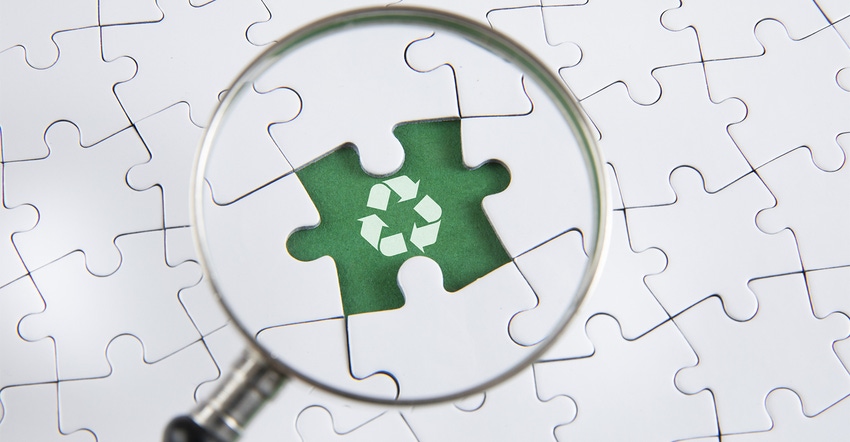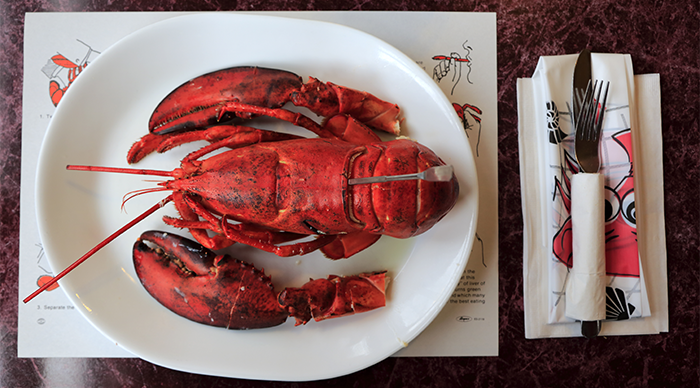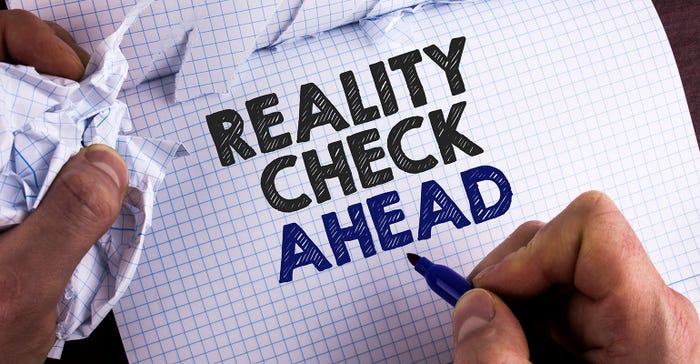The lobster value chain shows us how to make the recycling process work to optimize packaging sustainability.
April 24, 2023

Ever think about the lobster value chain?
First, lobster fishermen haul in their catches. They keep the ones that meet consumer needs for aesthetics and regulatory requirements for both individual and overall catch weight. The rest, along with any accidentally caught fish, are thrown back.
Once the boats land, brokers take their turn at picking and sorting. The chosen are packed up and sent to fresh fish markets. They are then picked over again by chefs and buyers who have them trucked to their restaurants. There, customers walk up to the tank and choose their dinner or let the staff do it for them.
Lobsters that were not sent to restaurants were sold to secondary markets for use by consumer-packaged goods companies, supermarket delis, and even pet food manufacturers for soups, salads, spreads, frozen food ingredients (e.g., lobster and macaroni), and specialty cat food.
Every step reduces the haul, creating waste and secondary market opportunities for lobsters that don’t meet retail standards. Each step also adds expenses for labor, transportation, storage, distribution, sales, and preparation.

Off the boat, a 1.25-pound lobster fetches around $6. Off the plate, that same lobster can fetch $45. The price goes up as the quality increases and the quantity decreases. In the case of secondary markets, which buy up sub-prime products, prices will be lower since quality is not top shelf.
At each one of these stages, the definition of “lobsters” changes. To the fishermen, brokers, and mongers, lobsters mean food, clothing, and shelter for their families.
To a restauranteur, a lobster signifies a quality meal that generates high margins, customer preference, and better online reviews. It also means revenue generation needed to stay in business and provide support for their families and staff’s families.
To the final customer, a lobster creates a pleasurable eating experience and the feeling of largesse. To someone trying to impress a date or business associate, it also signifies status, wealth, and generosity.
Which definition is the real one?
They all are. The definition is based upon the lens used to create and describe each of these versions of reality. Lobsters support all the links in this chain. But only the last link — the restaurant customer, frozen macaroni eater, or pampered pet — receives the inherent value of the product: uniquely tasty protein.
While consumers are at the end of the lobster value chain, they are at the beginning of the package recycling value chain.
What does this have to do with recycled packaging?
The similarities are quite substantial when considering that the definition of “recyclable” depends on where particular links are in the sustainable packaging value chain. The key difference is that while consumers are at the end of the lobster value chain, they are at the beginning of the package recycling value chain.

To consumers, recyclable means they can put a particular package in their home or municipal blue bins. Presort the trash, put it at the curb or drop-off point, and their job is done.
Next in the chain are the collectors. Residential or commercial waste collectors hope that the packages which customers put in their blue bins are only made from the materials that will either bring them cash when sold or will reduce tipping fees when their trucks head to landfills.
The truth is rather different: Actual recyclables will be less, and sometimes substantially less, than what consumers provide. At least some of what gets collected will be considered contaminants that will not continue the recycling journey, costing collectors for removal by their staff or by the sorting procedures at customers: material recovery facilities (MRFs).
MRFs do the bulk of sorting and contamination reduction. The front end of a MRF looks like a chaotic mess. The back end looks organized and far from random. There will be bales of cardboard, office and similar papers, high-density polyethylene containers, low-density PE (LDPE) packaging, aluminum cans, and steel cans. The goal of the MRF is to further reduce landfill discards while providing their customers with consistent, high-grade materials free of contaminants. The cleaner the bales, the greater the profits.
Re-processors will buy these sorted bales and most likely sort them again. Then, they will clean and re-pelletize the material, or in the case of paper, repulp it. Along the way, the various coatings, glues, and wraps will be removed and most likely discarded, or in the best of cases, sent to a waste-to-energy facility.
Again, expenses are incurred, and yields are reduced.
Finally, the post-consumer recycle (PCR) materials will be graded and put up for sale to packaging converters, who once again test for purity and performance. The accepted materials will find their way into new plastic and paper containers. The unaccepted materials may be returned for reprocessing, regraded, sold to waste-to-energy plants, or landfilled.
As in the lobster value chain, every step reduces the haul, thus creating waste. Each step also adds expenses for labor, transportation, storage, distribution, sales, and preparation.
The true measure of recyclability is...
So, which of these steps is the true measure of recyclability?
Again, they all are.
But here’s the difference. Lobstermen, who are the first link the chain, cannot control the generation of their products. Weather, storms, natural prey, regulation, and competition all set the playing field. Consumers are the last link, dependent on all the other links for both availability and cost of purchasing.
On the other hand, consumers are the first link in the recycling value chain. But, unlike lobstermen, they can control the entire field. Consumers do this by first purchasing products in packaging that is both recyclable and recycled at high rates, and then actually placing the used packages, hopefully in relatively clean condition, in residential or municipal recycling containers.

By doing these steps, consumers can assure that both the quality and the quantity of the recycling stream increases dramatically, thus moderating and even lowering the cost of recycled resin. Reducing the cost in turn will increase the demand for packaging made from PCR content.
Do such consumer-centric systems exist for packaging?
Yup. They’re called bottle bill or Deposit Return System (DRS) programs. The states that have them generate significantly more recycled containers than those that don’t have them.
The contamination rates are lower as well, since the system only takes containers that are barcoded as recyclable. And since this rather clean stream begins to flow early in the diversion process, the downstream costs associated with sortation and contamination are dramatically reduced or eliminated.
These two scenarios support the conclusion that the only way to create a single definition for recyclable packaging is if all the packaging in the value chain that claims recyclability is diverted from landfills and put back to use.
And that can only happen if consumers do what needs to be done.
What are you going to do to help them?
Robert (Bob) Lilienfeld has been involved in sustainable packaging for 25 years, working as a marketing executive, consultant, strategic planner, editor, writer, and communications expert. He’s President of Robert Lilienfeld Consulting, working with materials suppliers, converters, trade associations, retailers, and brand owners. He is Executive Director at SPRING, The Sustainable Packaging Research, Information, and Networking Group. You can also write him at [email protected] or visit his LinkedIn profile.
About the Author(s)
You May Also Like




